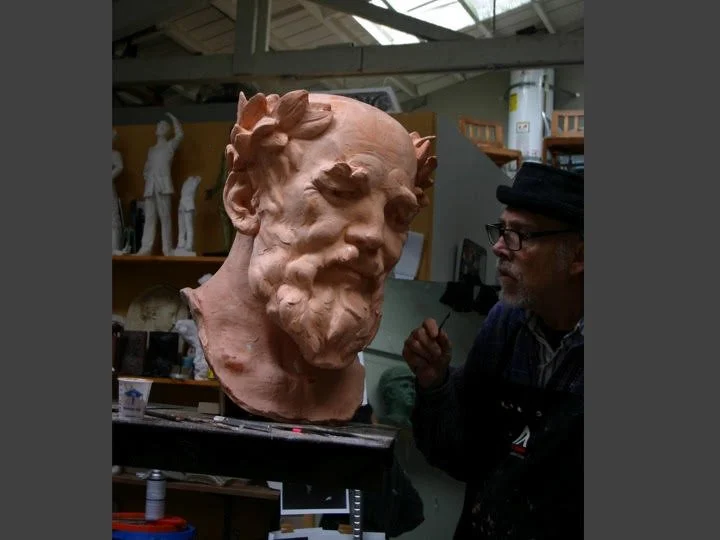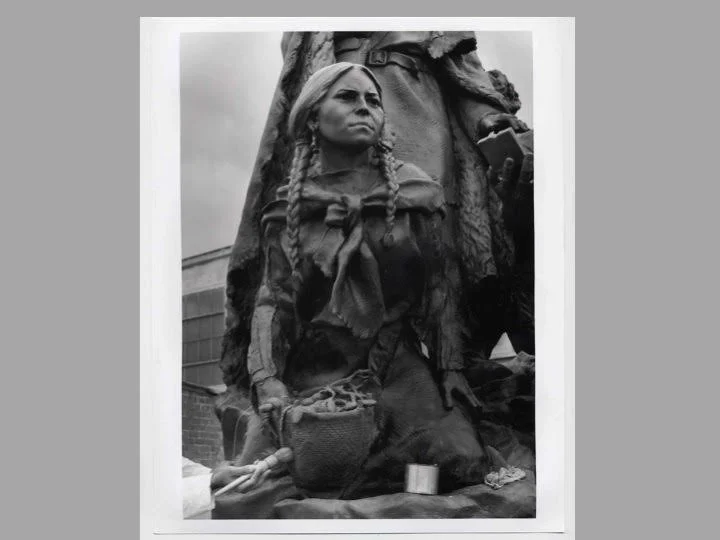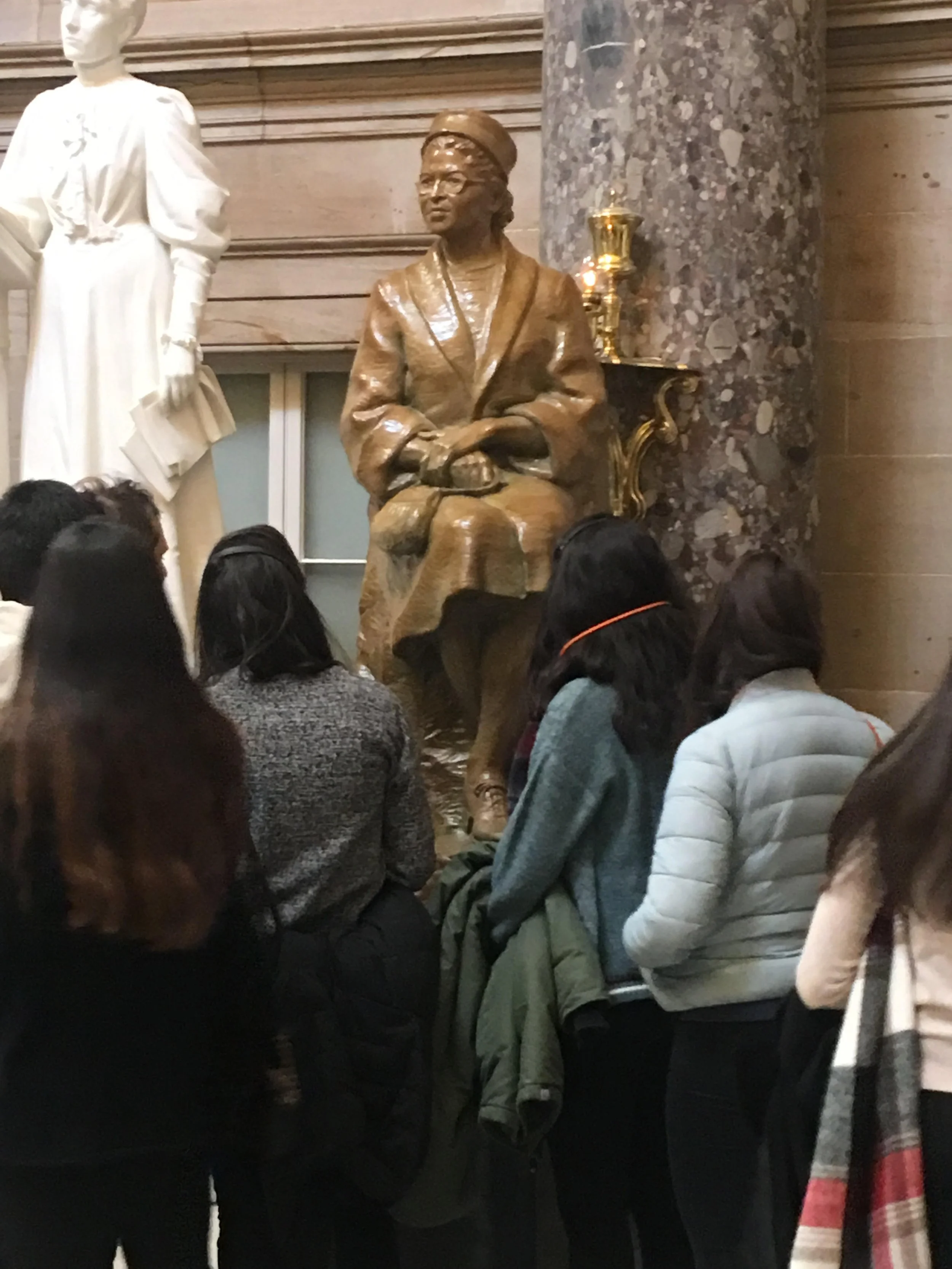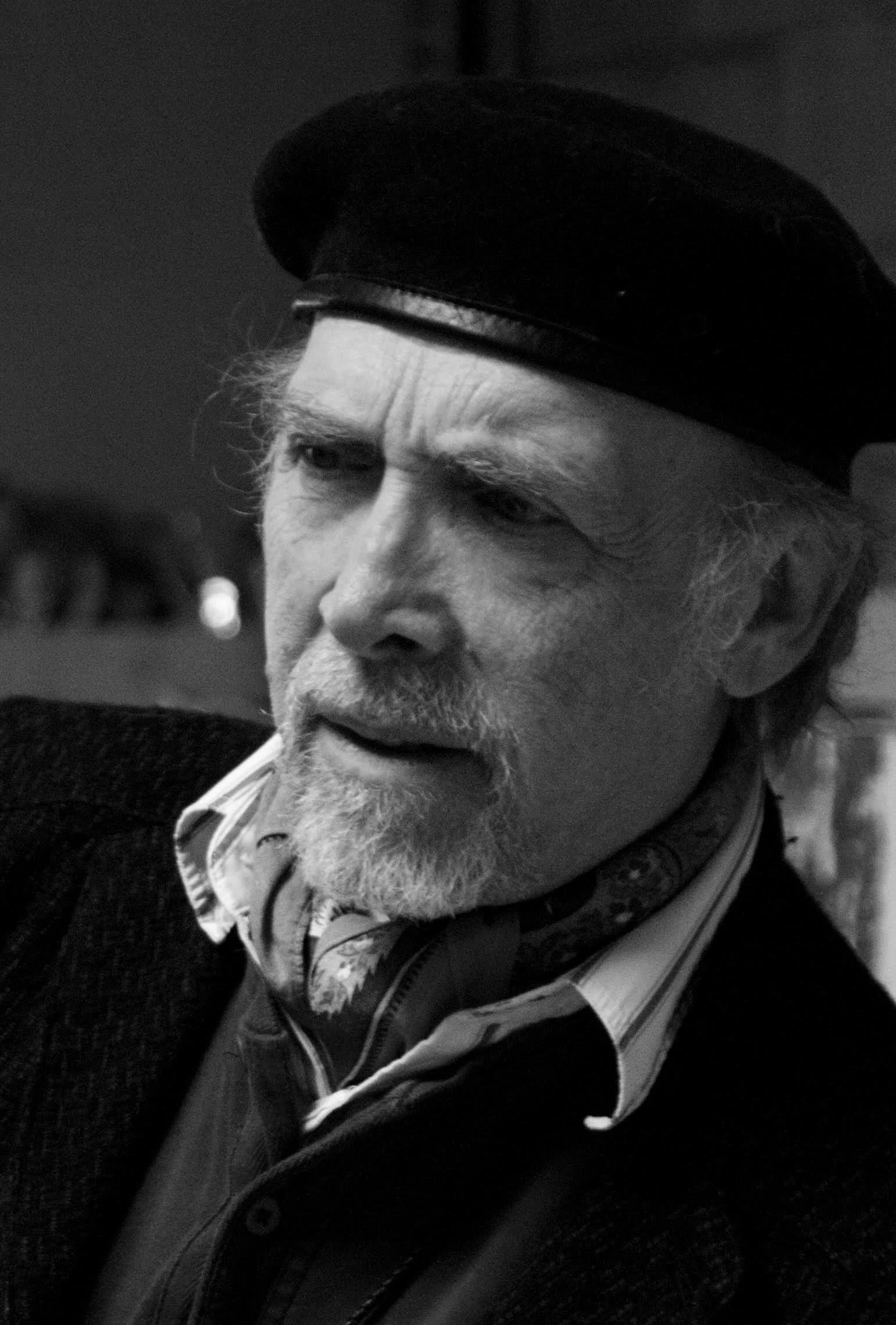Sculpting a Legacy: Eugene Daub’s Artistic Journey and Upcoming Book By Writer and Contributor Emily McGinn
Eugene Daub, a local sculptor with five decades of artwork under his belt, has a new project in the works. He and a team are compiling a book to document his pieces of artwork.
“The book is really over the span of the 80 year history of my life, and the 50 year history of my sculpture,” Daub said. “It really covers a lot of American history, starting with the Founding Fathers and all the way through all the great people who made this country what it is. And so in some ways, it's sort of an American sculpture history book.”
Daub did not start out as a sculptor. In fact, he spent years working in graphic design and print, with a position at an advertising agency as an art director. However, he pivoted to sculpting when he realized mid-career that it was his calling.
“I was about 33 and I decided I was obsessed with sculpture, and I was going to change my career and my life, and do what I had to do to make that happen,” Daub said.
Daub got his start as a sculptor at the Franklin Mint in the 1970s, where he and the other artists crafted items such as coins and collectibles.
In the early 1980s, he transitioned to a freelance career, picking up commissions. His first large commission — and still one of his favorite works — was the Christ the Healer sculpture for the Methodist Hospital in Philadelphia.
From there, he went on to do many commissions, many of them prominent American figures, including Rosa Parks in the U.S. Capitol’s Statuary Hall and a Lewis and Clark monument in Kansas City, Kansas.
For the past 20 years, he has done commissions in the Los Angeles area, including significant local historical figures like famous labor leader Harry Bridges and Phineas Banning, who started the L.A. Harbor.
“The work is sort of a survey of American history, in a way, because all the characters that I've done going back to the ’70s have been American historical characters,” Daub said.
For Daub, working on statues that display major historical figures served as more than just a project for him. Daub had to leave school early when he was younger, so it provided a way for him to continue learning throughout life.
“I fell in love with history, and I began to research all these things as I was doing them,” Daub said. “I had a very limited education before that because I had, through an unfortunate series of events, ended up leaving high school in the middle of the 10th grade. I really never had an opportunity to go to college, and I always felt very insecure about my education. When you begin to learn, you begin to learn how much you don't know, and that can be an amazing experience.”
Daub’s journey has consisted of little formal training in sculpting. However, he has honed his craft through self-taught skills. Daub’s creative process for each project consists of a series of steps: researching the subject, doing rough sketches as inspiration comes to him, doing more detailed drawings and choosing the strongest sketch. He focuses on conveying psychological context in his pieces, such as courage or contemplation. Then, he creates a series of sculptures, starting with small models and scaling up to the finished product.
However, not all of Daub’s works are commissions. In the early 1980s, he helped pioneer the American Medallic Sculpture Association, a group of artists, scholars and collectors interested in personal medallic sculpture.
“[It was about] artists making just the medals that they wanted or were inspired to make, that weren't commissioned pieces necessarily,” Daub said. “And this group continues to exist. I've been part of it now for almost 40 years, and there's about 100 members, and that has been a big part of my life: creating medals and medallions, not only for commissions, but also for personal artwork.”
Some personal pieces include what Daub calls his “big head series,” a series of head sculptures of people who inspire him, such as Ruth Bader Ginsburg, Joe Hill and Rachel Carson.
“I can have a lot more fun with it, because I don't have to be restricted to catch a detailed likeness, or I don't have to please anybody,” Daub said. “I can just have fun. And so I think some of my favorite pieces have come from that.”
Currently, Daub is in the process of preparing his book for publication with his team. The book will feature a collection of his works over the years. It will be about 80% photos and be a “coffee table” style book.
Right now, Daub is also raising funds for its publication. The team is about three-quarters of the way to its GoFundMe goal. There will also be a presentation by Daub at Angels Gate Cultural Center on Nov. 6, where Daub will offer a behind-the-scenes look at his artworks.
“My contribution is to show great people at their best,” Daub said. “These things are bronze. They're going to last for 1,000 years. So generations will look and remember these people and remember them in a really good way and in a way that inspires. So that's my job: to get these pieces to inspire and to memorialize them for posterity.”
You can check out some of Daub’s work on his website.
Eugene Daub Sculpture, Inc.
Bio:
Emily McGinn is a journalist based in the Los Angeles area. She enjoys reporting on and writing about a variety of topics from lifestyle to news, especially in her areas of specialty, environmental science and political science.













